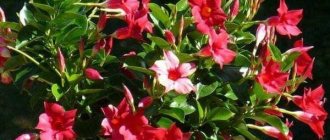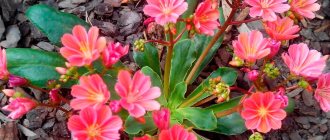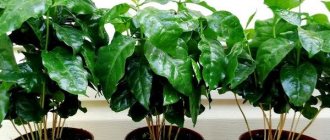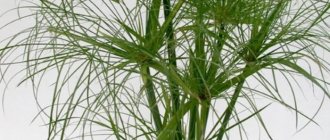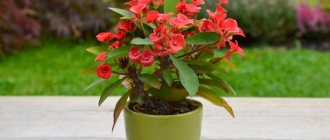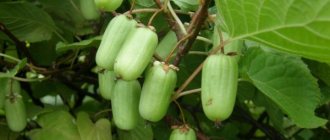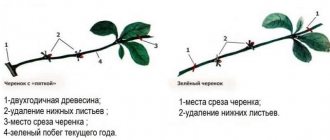Beautiful and slightly treacherous mandevilla
Mandevilla or Dipladenia can often be seen in Rio de Janeiro, Mexico City, Buenos Aires or other cities in South America. The royal vine is not afraid of work; it tirelessly decorates streets and squares with flowers and leaves. Flower growers and decorators are ready to give her freedom of action. And Mandevilla Dipladenia knows how to create a branch of the Garden of Eden on an unremarkable street. Its flexible stems wrap around the supports, its shiny leaves provide coolness, and its magnificent flowers amaze with the perfection of their shape, color and aroma. In its homeland, South America, dipladenia is very popular. Local residents gave her many flattering nicknames. Brazilians call it balsam and jasmine, in Bolivia it is rose. And the Mexicans called mandevilla the tree of love.
In its homeland, mandevilla is a favorite plant of gardeners.
There was a little confusion with the scientific name of the beautiful vine. In the 19th century, a new, newly discovered plant was named after the English flora lover Henry Mandeville, who also served as the British ambassador to Argentina. Similar vines were later described, but they were given the name dipladeniya. For many years, botanists argued about whether it was one species or two. Friendship won. Mandevilla and Dipladenia were officially recognized as a single plant from the Kutrovaceae family. Now both names are in use. Actually, this is correct. Why should royalty, and this vine refers to them, have less than two names?
Dipladenia can brighten up any corner
If you ask a botanist to tell you about this plant, he will say that mandevilla (dipladenia) is an evergreen shrub or subshrub with shoots of about 3-4 meters, with glossy, dark green leaves and funnel-shaped flowers. But such a description is too dry for a royal vine.
What kind of queen is she - the queen of mandevilla-dipladenia? The Mexican love tree has flexible, slender shoots that will gracefully and quickly twine around any support. The long branches are covered with shiny large leaves of an elongated oval shape. Large white, pink, purple, crimson or scarlet flowers abundantly cover the vine and resemble stars. Five slightly curled petals meet at the center, like an antique gramophone. Dipladenia blooms luxuriantly 10 months a year. More than 50 flowers can open on the royal vine at the same time. And they live for about ten days.
Delicate star flowers of the royal vine
As you already understand, the owner of a mandevilla is guaranteed a royal experience. But there is one not very pleasant circumstance. Like all royalty, the Mandevilla is not only majestic, but also treacherous. The juice of this plant contains poison. Therefore, when cutting a vine, you must wear protective gloves. You should not decorate your home with mandevilla if you have small children or pets.
Well, for the rest, this plant deserves more popularity than it has already acquired. Mandevilla grows very quickly, produces abundant ornamental foliage and blooms beautifully for a long time. It can be grown as a bush, as a vine or as an hanging plant. All forms have their own charm.
Gallery: Dipladenia in different forms
Ampelous mandevilla
Mandevilla liana - fence decoration
Winter garden full of vines
Bushes of multi-colored Dipladenia
Dipladenia on an arched support
Liana decorates the window beautifully
Video: Mandevilla is one of the best vines.
Scions of the royal vine
There are almost 200 species in the Dipladenia-Mandevilla genus. In their original form, they are vines, climbing or clinging with tendrils. However, in indoor floriculture they are also grown in other ways. Let's get acquainted with the most popular varieties of dipladenia.
- The most famous is Mandevilla or Dipladenia friable. This plant is called Brazilian balsam and Chilean jasmine. A climbing vine from Latin America that grows rapidly. Its thin shoots grow up to 4 meters. The leaves are green on top and gray or purple-tinged on the underside. Large flowers with a yellow spot deep in the funnel come in white and cream shades. They grow in clusters and smell nice.
- Dipladenia or Mandevilla Sander is a magnificent vine with plastic, curly three-meter stems. The leaves are leathery, about 5 cm long. Star-shaped flowers are collected in racemes. Initially, the color of the flower was pink with a yellow throat. Now there are many varieties bred on the basis of this variety. The most popular varieties are "Rubiniana", which has neon pink flowers, and "Dark", which has red flowers. There are already mandevillas with double inflorescences.
- Mandevilla or Dipladenia brillianti owes its name to its large (about 20 cm in length), glossy leaves. This is the most vigorously flowering vine. There are so many flowers that they completely hide the stems and leaves. Mandevilla flowers have a brilliant pink center, and the petals combine all shades of this color. There are varieties with yellow flowers.
- Dipladenia or Bolivian mandevilla is less common in indoor floriculture. It is similar to Sander's mandevilla, but with smaller flowers and sharper leaves. Flowers collected in tassels are white and fragrant.
- Mandevilla excellent has reddish shoots covered with light down. The leaves are smaller than other varieties. The flowers are colored rich pink or red, the bracts are reddish.
Photo gallery: Variety of flowers of mandevilla-dipladenia
Mandevilla sandera red and white
Mandevilla splendid
Shiny dipladenia with yellow flowers
Bolivian Dipladenia
Mandevilla is excellent
Dipladenia terry
Dipladenia variety "Pink Cream"
Mandevilla Sandera variety "Rubiniana"
Mandevilla loose
Pink mandevilla sandera
Mandevilla Sandera variety "Dark"
Climate for the plant
Mandevilla or Dipladenia is a vine that loves warmth, humidity and indirect light. Under such conditions, it is capable of blooming without rest for a year. But it’s better to still give her a winter break so that she doesn’t overwork herself growing flowers.
You can give the mandeville an ampel shape by placing it in a hanging pot or on a high stand. Or you can let the vine grow as it wants. But then take care of the net or support along which it will climb up. The stems can stretch up to 3 meters. You can grow a bush from Dipladenia by pruning it after flowering. True, in this case you also cannot do without strong support. The vine stems are too thin and tender.
Read about the seasonal climate for the plant in the table.
Table: conditions for dipladenia (mandevilla)
| Spring | Lighting - bright diffused light, light partial shade is acceptable. South-east and south-west are suitable for placing dipladenia. Western and eastern directions are also acceptable. There will be a lack of light in the north. In the south you will have to shade it. The most shade-loving Dipladenia Sander. Humidity is moderate or high. Spray, especially during bud formation. Temperatures are moderate and slightly higher, 20–25 degrees. Loves fresh air, ventilate the room. But don't create a draft. |
| Summer | In the summer, it is better to send the pot with the vine to fresh air (on the balcony or in the garden) to stimulate flowering. Lighting - bright light. It is necessary to provide shade from the hot midday sun. In hot weather, spray the plant daily, morning and evening, this is useful for high-quality flowering. The permissible temperature is quite high - 25 degrees or even more. The warmer it is, the brighter the color of the flowers. |
| Autumn | Bring the plant home as soon as the average daily temperature drops to plus 18. Dipladenia is very thermophilic. Lighting - bright diffused light, maybe a little direct sun. Humidity is moderate 50–60 percent. Temperature 20–25 degrees. By the end of autumn - plus 16–18 degrees. |
| Winter | Lighting - bright light, a small amount of direct sun. You can put it in the south. If there is not enough light, the stems become too elongated. Arrange artificial lighting. Humidity is moderate 50–60 percent. Spray the plant occasionally. Especially when kept warm. Temperature plus 16–18 degrees for all varieties except loose. She needs a cooler wintering environment of 12–15 degrees. Protect the vine from drafts. |
During the heating season, do not place dipladenia near radiators. Excessively dry air will have a bad effect on the condition of the leaves. They may curl and fall off.
Don't forget to keep the foliage clean. Shiny and large, it gives the vine an attractive appearance. Leaves must be regularly freed from dust by wiping with a damp sponge or cloth. This will help the plant breathe and maintain its decorative appearance.
Outdoor care
Dipladenia (Mandevilla) - growing and care at home
When choosing a place to plant a vine, it is important to consider the amount of lighting. The hole for the bush must be filled with a special composition consisting of sandy, well-drained soil with the addition of humus. If the flower is planted in a container, you will need moss, sand, and garden soil.
The tropical plant does not tolerate drafts, heavy rains and does not like soils with poor drainage. In such conditions it will grow poorly and may even die.
A fast-growing vine needs support for its long stems. These can be frames, racks or trellises.
In order for a young bush to delight with lush foliage and flowering, it needs to be pinched regularly. It is also necessary to remove damaged or dried areas and ensure that the flower does not infest pests.
Dipladenia can withstand temperatures not lower than +10 °C, so in regions with cold winters it must be brought indoors.
Transfer rules
Young mandevilla plants need to be replanted annually in the spring, and sometimes in the summer if growth is very rapid. When the plant has reached maturity, it is replanted every 3–4 years or even less often. Change the mandevilla's place of residence only if it becomes uncomfortable in the old pot. The roots have entwined the entire ground and are already protruding from the drainage holes.
If your vine has grown stems of 2-3 meters, replanting it is not easy. Sometimes it is enough just to update the top layer of the substrate. Carefully, trying not to damage the roots, remove 2 cm of soil from above and fill in with new one.
By the way, when choosing a pot for an adult dipladenia, pay attention to wide containers, they will provide room for the roots. And crowding does not affect the flowering of the plant in any way. Dipladenia blooms in any case. But a spacious pot means you can replant the plant less often.
In order for dipladeniya to grow quickly and bloom luxuriantly, give it fertile, loose and slightly acidic soil. Before planting, be sure to disinfect it; Dipladenia roots are good food for pests. Approximate compositions of substrate for vines:
- Take soil from the store for Saintpaulias or pelargoniums, add brick chips or perlite.
- Mix sand, peat, humus, turf and leaf soil in equal parts. Add half a share of perlite or brick chips.
- Mix 2 parts each of turf and clay soil and one part each of sand, leaf soil and humus.
When transplanting vines, be careful not to break the long stems.
- Prepare a suitable pot, drainage (gravel, expanded clay or brick chips) and protective gloves, and disinfect the substrate.
- Place a drainage layer on the bottom of the container and a small amount of substrate on top.
- Wear gloves before removing your mandevilla from its old pot. Remember: the plant is poisonous!
- Remove the vine from the old container without disturbing the earthen ball. Place it in a new pot and place a support there.
- Sprinkle the substrate between the wall of the pot and the earthen ball, compacting it a little. Pay attention to strengthening the support.
- Water the plant, you can spray it, place it in diffused light or partial shade.
Types and varieties of dipladenia: photos and descriptions
There are several more interesting facts that will be interesting to know for gardeners who are going to “settle” this overseas “guest” in their home.
- Firstly , it belongs to the Arosupaceae (Kutrovaceae) family.
- Secondly , the indoor liana-like flower Dipladenia received its second name - mandevilla - due to the fact that it was first found in America, and then in other parts of the globe. For some time it was believed that these were two different plants, which were named differently, but years later they established that botanists had discovered the same species.
- Thirdly , not only these names are used by many residents in this or that corner of the world. This is why you can find “Bolivian rose” and even “Mexican love tree” on sale, which are the same plant.
The vine looks quite attractive: it is characterized by slightly elongated leaves with sharp tips, which are attached to climbing stems that tend to creep along surfaces. It should be noted that the length of the homemade mandevilla flower, dipladenia, can reach 4 m. In this regard, they try to grow it in a liana-like form or in the form of a small bush.
The tropical plant is hard not to recognize: its colorful flowers - flamingo, pink, scarlet and even snow-white - resemble a funnel. The color of the petals depends on which variety a particular specimen belongs to. It is curious that if the mandevilla is absolutely healthy, then during the flowering period up to 70 flowers can bloom on it at the same time. By the way, they please the eye of a gardening master for no more than 10 days between March and early November.
It should be noted that the retail chain offers various hybrids of indoor dipladenium plants imported from the tropics:
Rosea (pinkish-salmon color)
Rubiniana (bright red-pink)
Brand new variety of Dipladenia boliviensis with white flowers
Despite this, at home, most connoisseurs prefer to grow exactly five species of this plant. The fact is that only they are able to grow and develop in confined spaces.
Sandera is one of the specimens that belongs to tropical vines. Its flowers reach up to 8 cm in size and have amazing colors - deep pink on the outside and bright yellow on the inside.
Another type of dipladenia is excellent , distinguished by thin stems and rich scarlet buds. This variety is also evergreen, characterized by slightly hairy shoots.
Bolivian mandevilla surprises with its snow-white petals located on smooth stems covered with small leaves. In addition, the buds are collected in inflorescences consisting of 4 flowers.
The indoor shiny Dipladenia vine, whose stems may be slightly pubescent, pleases the eye of gardeners with its characteristic pinkish-flaming colors. It should be noted that in most cases this species is grown as a shrub.
Mandevilla loose is distinguished by the following feature - before the onset of winter dormancy, it sheds its leaves. Until this moment, plants of the species are decorated with snow-white flowers, which can be collected in groups of 10 buds.
Since science - in particular, the activities and experiments of breeders - does not stand still, many decorative varieties of Dipladenia can now be easily purchased on the market:
Alamand - has a yellow color
Cosmos White - distinguished by large, soft cream inflorescences
Peresol Stars - combines scarlet and white shades
And these are just a few of them, since thanks to the tireless work of scientists, more and more new hybrid varieties appear every year.
Diamantina jade scarlet is a small plant that can reach a height of up to 30 cm and is most often bred as a kind of decoration for home or landscape flower beds. It is characterized by fiery red buds that seem to glow in the dusk of spring and summer evenings.
Pay attention to the description of several more varieties of Dipladeniya vine with photos: Topaze vermilion has curly stems, as a result of which this specimen is most often bred for weaving hanging baskets.
In addition, its rich red buds look very impressive as they are collected in tassels.
But Super trouper is distinguished by an unusual combination of canary and pinkish undertones in which its petals and flower cores are colored.
Experts warn that it is not so easy to try to make a mandevilla plant that limply creeps or hangs from any surface. The fact is that when growing and caring for dipladenia at home, you should remember that this plant can stop growing due to human intervention, and even if this does not happen, it will still strive - that is, grow - only up.
In addition to what has already been said, you need to pay attention to the fact that any materials and devices can be used as support for this tropical “guest”. There is only one caveat - the equipment must be one and a half times taller than the seedling and securely secured in a container (for example, in a pot).
Before starting the process of growing and caring for Dipladenia vine, beginners should keep the following information in mind. If you want the plant to have a more saturated shade, you need to take care of the temperature in the room in which it is located - 25 °C is considered ideal.
In addition, before starting the watering procedure, you should let the water sit for 72 hours in an open container so that the smell of vinegar, which needs to be added to the liquid, disappears.
By the way, gardeners warn: be careful, since all parts of Dipladenia are very poisonous. That is why, when performing certain manipulations related to caring for the vine, try not to damage its trunk.
Not by watering alone
Caring for indoor lianas is not only about watering and fertilizing. Although this is also very important for an accelerated plant. Dipladenia Mandevilla will lose its royal appearance if left without regular haircuts. A liana that is not pruned stretches unattractively and is too lazy to bloom.
Drink for the royal vine
Let us remember once again: dipladenia grows rapidly and blooms wildly. And from this it follows that during the growth period, in spring and summer, it vitally needs full and fairly frequent watering. The royal vine will not be satisfied with ordinary tap water, which contains a lot of lime. Give it soft, ideally rain or melt moisture. But if you don’t have such a delicacy, stock up on settled water or boil it, or you can pass it through a filter. To please her majesty mandevilla, add a little citric acid to the drink. Water your vine as soon as the top layer of soil dries out. Do not wait for the earthen clod to dry out - this is too difficult a test for a delicate plant. Flower growers advise that in the summer heat and especially at the height of flowering, water Dipladenia daily, and sometimes twice a day - in the morning and in the evening.
During flowering, the vine needs abundant watering and feeding.
With the arrival of autumn, it is necessary to reduce the amount of watering so that by the beginning of winter the vine switches to an economical semi-dormant mode. During winter rest, the plant should be watered only after the entire earthen lump has dried and stood dehydrated for a day or two. Drain all the water that has flowed into the pan so that there is no stagnation of moisture at the roots. Overmoistening of the substrate in combination with cool air can lead to rotting of the roots.
Adequate nutrition for active growth and flowering is of great importance. Start feeding mandevilla in March, or even February, and stop in October. Give your royal vine a dose of fertilizer every two to three weeks. In the spring, to increase greenery, feed with nitrogen. As soon as the buds have formed, apply fertilizers with phosphorus and potassium.
How to root dipladenia: composition of soil mixture for indoor vines
Look at the photo of a homemade Dipladenia flower: in order to grow the same healthy specimen in your apartment, you need to take care of its soil.
- Firstly , the land must be fertile,
- Secondly , comply with the previously described features of caring for this plant.
It is understood that regular watering also requires the presence of appropriate soil: it is desirable that the soil mixture includes coarse sand, which will allow water to pass through and provide free access of oxygen to the mandevilla root system.
In addition, experts advise using brick chips instead of ordinary soil (about a quarter of the total volume with particles that should be no larger than 5 mm). This clever move helps reduce the frequency of watering the tropical vine.
When asked how to successfully root dipladenia, experienced gardeners advise including peat in the soil mixture: the fact is that many overseas plants prefer acidic soils.
Experts agree that the ideal option for growing mandevilla in a pot is a filler that consists of old compost, coarse sand, cucumber soil - that is, greenhouse soil - and, as already mentioned, peat.
There are no non-flowering Mandeville Dipladenias.
When it comes to flowers, Dipladenia-Mandevilla cannot be accused of being stingy. Liana, who is not even a year old, is already trying to bloom. And grown plants bloom from the beginning of spring until the end of autumn. They are ready not to stop in winter. But short daylight hours and cool air slow down all processes. We'll talk about rest later. And now about the difficulties associated with flowering.
For mandevilla, flowering is the purpose of life
There are simply no mandevillas that do not bloom at all. Some owners of royal vines complain that they bloom sparingly, a dozen or two flowers per season, and that’s all. Most likely, it is not the capricious nature of the royal person who is to blame, but the neglect of the conditions of detention and the peculiarities of care.
Mandevilla blooms when it is not even a year old
For example, a plant is deprived of winter rest. Or he didn't get his hair cut. And flowers appear only on young shoots. Where will the flowers come from if there are no young shoots? High-quality flowering cannot be achieved if the vine does not have enough light. It happens: the buds set and fell off because they forgot to water the plant. The situation is the same with nutrition. There are few buds, the flowers have turned pale and shredded - your vine is hungry. Feed it with a complex with phosphorus and potassium - flowering will resume.
How does a plant survive winter?
In South America, in its homeland, dipladenia can easily do without winter rest. Because there is no winter, with frost, darkness and other joys, in her native land. In our harsh latitudes, the royal vine has slightly changed its habits. Flowering in our climate takes a lot of her energy. Therefore, having moved into the rooms, the Mandevilla got used to taking vacations in the winter, from late November to February.
During this period, the heat-loving plant wants a slight coolness, 16–18 degrees. Liana goes on a dry diet and does not take food. In winter, it should be watered only after the soil has completely dried, following the rule: the colder it is, the less often you water it.
Autumn pruning
As already mentioned, without a haircut, the royal vine will lose all its grandeur. Dipladenia produces buds only on new shoots. This means that if pruning is not done, expect sparse flowers at the ends of elongated stems.
Flowers appear only on young shoots
Dipladenia is trimmed not in the spring, like many plants, but in the fall, when it has finished blooming. Or in February before growth begins. In some cases, the vine will have to be cut twice. Experienced flower growers recommend not sparing long lashes, but shortening them by half or a third. You need to leave the stem about three to four pairs of leaves from the fork or soil on the young plant. Young shoots will develop from their axils. And you will receive a royal vine in all its blooming glory. Do not throw away the cut stems; they are propagation material.
And don't forget to wear gloves when pruning the vine!
Video: Caring for Dipladenia
About pests and diseases
Dipladenia roots are easily attacked by a fungus that causes rot. Its allies are waterlogging of the soil and stagnation of air. Another underground enemy is the root nematode.
The royal vine also suffers from voracious insects: aphids, scale insects, and spider mites. These pests can take a liking to your plant during summer walks in the fresh air. When you return the dipladenia back to the house, examine its leaves and stems to see if insects have settled there. Just in case, wash the vine with a warm shower and soapy water.
About errors, diseases and pests - in the following table.
Table: care errors, diseases and pests of dipladenia
| Problem | Cause | Elimination |
| Leaves wither and curl. Buds and flowers fall off. | The air is too dry. | In winter, remove the vine from heating appliances. Humidify the air by all means (a container of water, a fountain or an electric humidifier). Spray the plant. |
| The leaves turn yellow and fall off. Buds and flowers die. | 1. In winter - low temperature. 2. In summer - excessive heat and insufficient watering. | 1. In late autumn and early winter, it is natural to lose some leaves. Try raising the temperature in the room. 2. In hot weather, shade the plant and water it twice a day if necessary. |
| The leaves turn pale, the flowers become smaller and die quickly. | Lack of light. | Move the plant to a brighter place. When daylight hours are short, provide artificial lighting. |
| Growth is slow, flowering is poor, flowers are small and discolored. | Liana lacks nutrition. | During the period of active growth and flowering, fertilize the plant regularly (for more details, see the chapter “Drink for the royal liana”). |
| The leaves wither massively, become soft, turn yellow and die. | Waterlogging of the soil, poor quality soil. The result is root rot caused by fungus. | We need an ambulance. Remove the vine from the pot and determine the extent of the damage. All roots have become soft and darkened: it is useless to treat. The main part of the root system is elastic. The plant can be cured: remove areas affected by rot, dry the roots, transplant the plant into a new pot and disinfected substrate, water with carbendazim solution. |
| Leaves become discolored, curl, and stems become deformed. Tiny insects are visible. | Aphid infestation. | Spray dipladeniya with soapy water. For severe damage, use insecticides. |
| The leaves have drooped, turned yellow, and have cobwebs on the underside. | A spider mite attacked. | Remove leaves affected by the pest. Wash the plant in the shower; the mite cannot tolerate high humidity. Spray the plant with a systemic insecticide, phytoferm or derris. |
| There are hard brown scute spots on the underside of the leaves. | Your vine is being destroyed by a scale insect. | Remove insects with a damp cloth; they are under the shields. Afterwards, treat the plant thoroughly with an insecticide. It is rare to kill a pest the first time. Continue processing until final victory. |
| The plant has turned pale and is not developing well. When examining the roots, spherical swellings are visible. | These are root nematodes - microscopic worms that eat roots. | Use a knife to remove the affected roots, dip the remaining ones in a container of hot water, then dry and sprinkle them with charcoal. You can shed the soil with Tekta and Vidat preparations. |
Mandevilla Loose
From May to November it blooms in white and pink. In winter it sheds its crown. The buds are collected in inflorescences of 15 pieces. The flowers are modest in size, rarely reaching 9 cm in diameter. The leaves are oval with sharp tips, the color is bright green. The underside is grey-burgundy.
The difficulty of care is average. Watering is constant - 3-4 times a week. During the period of flowering and active growth, fertilize frequently, along with watering. In winter, moisture and fertilizing are reduced. Air humidity is maintained as in the tropics - 60%.
Mandelina Superb
An evergreen climbing plant with large flowers of rich scarlet color. The inflorescences contain 6-8 flowers. Cup-shaped with a long rim. The foliage is round and shiny.
Loves fertile acidic soils. Grows up to 3 m. Blooms from May to November. The flower in the apartment is oriented towards the south, as it needs bright light. Humidity – tropics all year round, 60%.
Important! During growth, they are fed with mineral fertilizers.
Mandevilla splendid
Large pink, red or white flowers, 6 pieces per brush. The leaves are shiny, lined with veins on the underside. The shoots are smooth and flexible. Flowering is long lasting.
Mandevilla splendid
Soils required are loose and acidic. The room is oriented to the south and west sides. The plant requires several hours of direct sunlight. Needs constant watering and high humidity.
Mandevilla boliviana
Characterized by remarkable decorative qualities. Flowers are formed in leaf axils. The corollas are long, there are 3-4 flowers in one raceme. White color. The leaves are large and are not shed in the winter.
Agrotechnical measures are carried out within the requirements for tropical crops. When seedlings are purchased from nurseries, they are not immediately transplanted. They quarantine for a week so that the plant gets used to its new place of residence. At this moment you need to care for it and treat it with Fitosporin and Fitoverm.
Important! The flower endures stress after moving, so it is very vulnerable to diseases and pests. After a week of adaptation, it is transplanted.
Mandevilla is a tropical exotic. Growing it indoors is troublesome. A flower is purchased when it is possible to create conditions close to natural. The plant needs a lot of sun, moisture, and nutrients. It is susceptible to diseases and pests. Deviation from agrotechnical rules leads to the death of the plant.
Reproduction like royalty
The royal mandevilla-dipladeniya vine is most often propagated by cuttings. This method is the most effective. Moreover, cuttings can be rooted both in the substrate and in water. Some enthusiastic gardeners grow vines from seeds. This method is more complicated and you will have to wait longer for the results.
Cuttings
- Mandevilla Dipladenia cuttings can be rooted during the growth period. But still, the best time for reproduction is spring. If you have a Sander vine, keep in mind that this variety is propagated by stem cuttings, while all others are propagated by apical cuttings.
- Wear protective gloves to avoid being harmed by mandevilla venom.
- Take apical or stem cuttings with one pair of leaves at the top. Make the bottom cut beveled and the top cut straight.
- Trim the leaves on the cuttings slightly to reduce water evaporation.
- Keep the lower cut for a day in a rooting solution (Epin, Zircon or others).
- Prepare the substrate: peat and sand, peat and perlite. Be sure to disinfect the soil.
- Plant the cuttings in one container (ideally in a greenhouse with bottom heating) or each in a separate pot. Bury down to the leaves. Cover them with film, bags or cups.
- Place the seedlings in a warm place, the temperature should be plus 25 or higher.
- Regularly moisten and ventilate the plantings.
- On average, cuttings take one and a half months to take root.
- If new shoots appear on the cuttings, remove the protective cap.
- After two to three months, the young vines are transplanted into a more fertile substrate (soil for Saintpaulia or universal soil).
Planting Dipladenia cuttings
The cuttings, planted in separate cups, have already taken root
Mandevilla cuttings can also be rooted in water. But the result will not always be positive, say those who have tried this method.
The cuttings have given roots
Although there are successful experiments. An advanced florist shares his experience in propagating mandevilla.
Winter experiment. I cut off the elongated, young green vines of my mandevilla, it was a pity to throw them away, so I put them in a glass of water. There, in the internodes (did I correctly name the place where the leaves grow?) there are just the rudiments of roots. They grew quickly in the water and I planted them in the ground. I've already taken off the bag, it seems like the flight is normal so far. But the cuttings are practically naked, I don’t know if there will be any use. Last year I rooted my plants directly in the ground, but with mature cuttings with leaves, the process took longer.
Kys
https://forum-flower.ru/showthread.php?t=204&page=5
